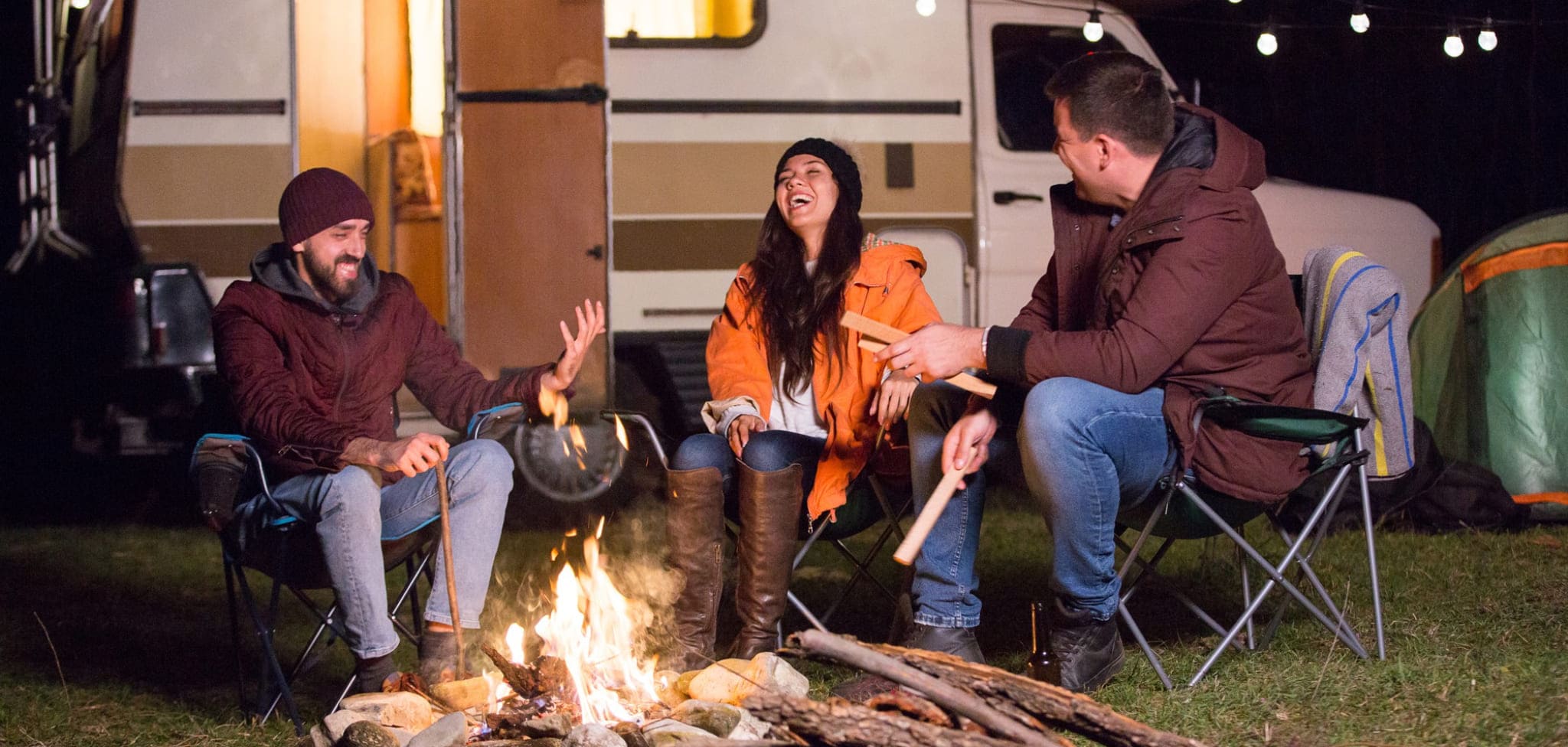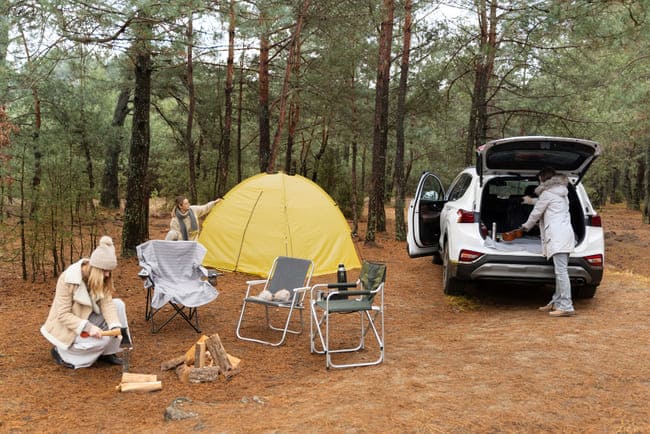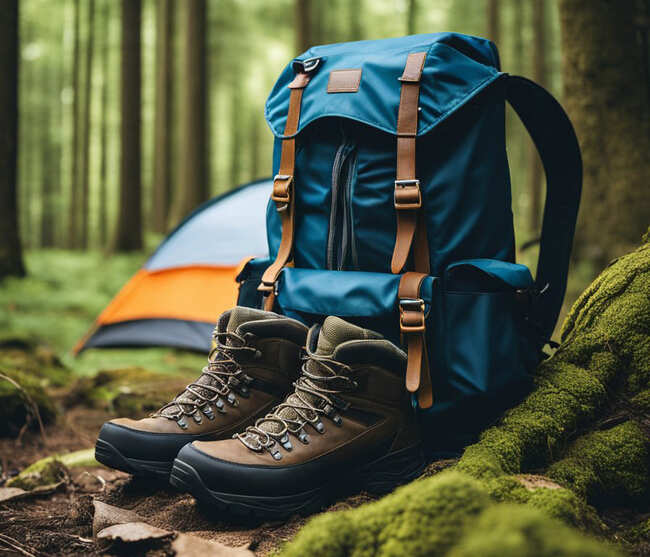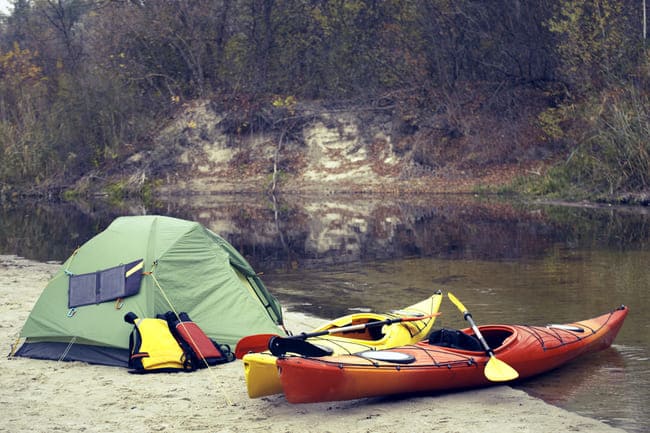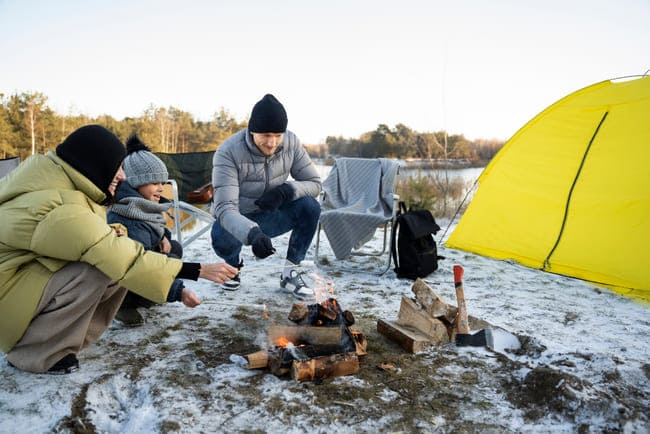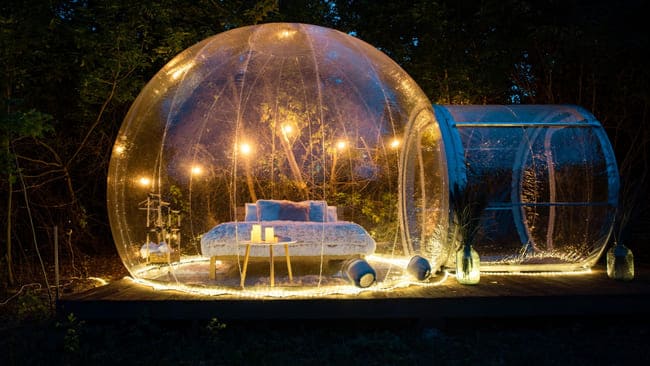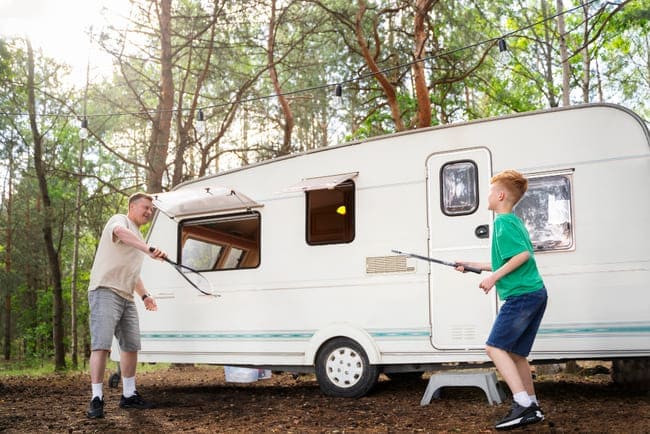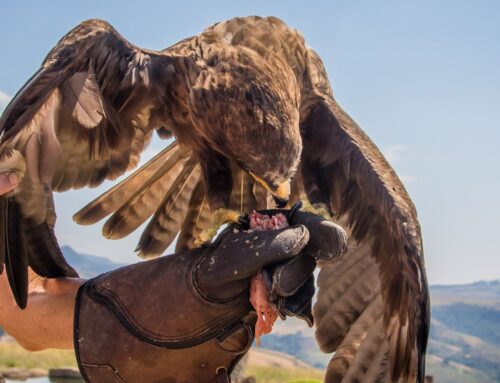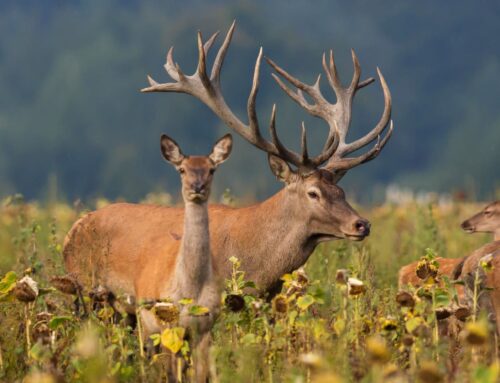Understanding Camping Types: A Comprehensive Guide
Camping is a popular outdoor activity that allows people to escape the hustle and bustle of their daily lives and immerse themselves in nature. However, not all camping experiences are created equal. There are many different types of camping, each with its own unique set of benefits and challenges. Understanding the different types of camping can help you choose the right one for your needs and preferences.
One of the most basic types of camping is tent camping. This involves pitching a tent at a designated campground or in the backcountry and using it as your shelter for the duration of your trip. Tent camping is a great option for those who want to experience the great outdoors without the hassle and expense of a more elaborate setup. Other types of camping include RV or van camping, car camping, backpacking and hiking camping, kayak or canoe camping, and winter camping. Each of these types of camping has its own unique set of benefits and challenges, and understanding them can help you choose the right one for your next outdoor adventure.
Types of Camping
There are different types of camping, each with its own unique characteristics and requirements. Some of the most common types of camping include:
-
Frontcountry Camping:
This type of camping is often referred to as car camping, as it typically involves setting up camp in a designated campground that is easily accessible by car. These campsites usually have amenities such as running water, restrooms, and fire pits.
-
Backcountry Camping:
This type of camping involves hiking or backpacking to a remote location and setting up camp in the wilderness. Backcountry camping requires more planning and preparation, as there are no amenities or facilities available.
-
Glamping:
This is a more luxurious type of camping that involves staying in a fully equipped cabin or tent with amenities such as electricity, running water, and comfortable bedding.
-
RV Camping:
This type of camping involves traveling in a recreational vehicle (RV) and staying in designated RV parks or campgrounds. RV camping allows for more comfort and convenience, as the RV provides a home-like environment.
Camping Equipment Essentials
Regardless of the type of camping, there are some essential items that every camper should bring. These include:
-
Tent:
A tent provides shelter and protection from the elements. It is important to choose a tent that is appropriate for the type of camping and weather conditions.
-
Sleeping bag:
A sleeping bag provides warmth and comfort while sleeping outdoors. It is important to choose a sleeping bag that is appropriate for the temperature and weather conditions.
-
Camp stove:
A camp stove allows for cooking meals and boiling water. It is important to choose a stove that is appropriate for the type of camping and the number of people in the group.
-
Cooler:
A cooler is essential for keeping food and drinks cold. It is important to choose a cooler that is appropriate for the length of the camping trip and the amount of food and drinks needed.
-
First aid kit:
A first aid kit is essential for treating minor injuries and illnesses. It should include items such as bandages, antiseptic, pain relievers, and insect repellent.
Camping can be a fun and rewarding experience for those who are prepared and knowledgeable. By understanding the basics of camping and having the right equipment, campers can enjoy the great outdoors and create lasting memories.
“It’s worth noting that you can prepare yourself for your camping trip by obtaining the essential equipment. You can learn more about this in our article on Camping Essentials.”
Tent Camping
Tent camping is a popular way to enjoy the great outdoors. It’s a budget-friendly option that allows campers to immerse themselves in nature without breaking the bank. However, choosing the right tent is crucial to ensure a comfortable and enjoyable camping experience.
When selecting a tent, campers should consider the size, weight, weather resistance, durability, cost, and type of camping they will be doing. The most important factor is the size of the tent, which should be based on the number of people who will be using it. It’s recommended to choose a tent that has a capacity of at least two more people than will be sleeping in it. This provides enough space for gear and allows for more comfort.
The type of camping will also determine the type of tent needed. For example, backpackers will need a lightweight and compact tent that can be easily carried on long hikes. On the other hand, car campers can opt for a larger and more spacious tent that provides more comfort and amenities.
It’s also important to choose a tent that is weather-resistant and durable. A tent with a rainfly, ample ventilation, and sturdy poles will provide protection from rain and wind. Additionally, a tent with a waterproof floor and sturdy zippers will withstand wear and tear from frequent use.
Overall, tent camping is a great way to enjoy the outdoors and connect with nature. By choosing the right tent, campers can ensure a comfortable and enjoyable camping experience.
Backpacking or Hiking Camping
Backpacking or hiking camping is a type of camping that involves carrying all necessary equipment and supplies in a backpack and hiking to a campsite. It is a popular option for those who want to get away from the crowds and explore the wilderness on foot.
One of the main differences between backpacking and car camping is the weight and amount of gear that can be carried. When backpacking, hikers need to be sure they have all of the food, water (or water purification), shelter, clothes, and sleeping gear they’ll need for their trip. As a result, backpacking gear is designed to pack smaller and lighter than car camping gear.
Backpacking camping trips can range from one night jaunts up to extended weeks-long adventures. The length of the trip will depend on the hiker’s experience, physical fitness, and available time. Backpacking camping requires larger stretches of time due to longer distances traveled, while camping trips can be done in a shorter amount of time.
When it comes to choosing between backpacking or camping, there are some key considerations to keep in mind. Time available is another key consideration as they both involve different commitments of time. Backpacking usually requires larger stretches of time due to longer distances traveled, while camping trips can range from one night jaunts up to extended weeks-long adventures.
In summary, backpacking or hiking camping is a great way to explore the wilderness on foot. It requires careful planning and preparation, but the rewards are worth it for those who enjoy the challenge and adventure of backpacking.
Canoe Camping
Canoe camping is a type of camping that involves traveling by canoe to a remote campsite, typically in the backcountry. Canoe campers typically paddle pre-planned routes on lakes and rivers. It might include river travel only, lake travel only, or a combination of both. It can also include ocean water travel if you’re traveling along the coast.
Canoe camping is an excellent way to explore the outdoors while enjoying the peace and quiet of nature. It is also a great way to get some exercise and fresh air. Canoe camping can be done solo, with friends, or with family. It is a great way to bond with others and create lasting memories.
When planning a canoe camping trip, it is essential to have the right gear. A canoe, paddles, life jackets, and camping equipment are all necessary. Canoe camping requires more gear than backpacking, but it is still possible to keep things lightweight and compact.
It is also important to plan out the route carefully. Canoe campers should be aware of the water conditions, weather, and any potential hazards along the way. Different types of water require different skills, so it is essential to have the necessary experience and knowledge to navigate safely.
Overall, canoe camping is a great way to explore the outdoors and enjoy the beauty of nature. It requires some planning and preparation, but the rewards are well worth it.
Winter Camping
Winter camping is a great way to experience the beauty of nature during the colder months. However, it requires a bit more preparation and specialized gear than camping during the warmer seasons.
One of the most important things to consider when winter camping is staying warm. This means having the right gear, such as an insulated sleeping pad, a warm sleeping bag, and appropriate clothing layers. It is also important to stay dry, so waterproof gear, such as a tent and rain gear, is a must.
In addition to staying warm and dry, winter campers should also be prepared for shorter days and longer nights. This means bringing a headlamp or other light source, as well as planning activities that can be done in the dark.
When choosing a campsite for winter camping, it is important to consider the terrain and weather conditions. Avoid camping near avalanche-prone areas or areas with a high risk of falling trees or branches. It is also important to be aware of any potential hazards, such as ice or snow-covered hazards.
Overall, with the right gear and preparation, winter camping can be a rewarding and memorable experience for those who enjoy the great outdoors.
Glamping
Glamping, short for “glamorous camping,” is a type of camping that offers luxurious amenities and facilities beyond what traditional camping provides. It is a popular option for those who want to experience the great outdoors without sacrificing comfort and convenience.
Glamping accommodations can range from cabins, treehouses, yurts, tents, tiny houses, caravans, caves, towers, and more. These accommodations often come equipped with comfortable beds, electricity, heating and air conditioning, private bathrooms, and even kitchenettes.
Some popular glamping destinations include national parks, private campsites, and luxury resorts. Glamping can be a great way to experience nature while enjoying the comforts of modern amenities.
While glamping can be more expensive than traditional camping, it offers a unique and memorable experience that is worth the investment for many people. It is also a great option for those who want to introduce camping to someone who may be hesitant to rough it in the wilderness.
Overall, glamping is a great way to experience the outdoors in a comfortable and stylish way. With a variety of accommodations and locations available, there is a glamping experience for everyone.
RV and Van Camping
RV and van camping are popular ways to explore the great outdoors. RVs, or recreational vehicles, come in various types and sizes, from large Class A motorhomes to smaller Class B and C motorhomes, as well as travel trailers and fifth wheels. Vans, on the other hand, can be converted into campers for a more minimalist camping experience.
RV camping is a great option for those who want the comforts of home while on the road. Most RVs come equipped with a kitchen, bathroom, and sleeping quarters, making it easy to travel long distances without sacrificing comfort. Class A motorhomes are the largest and most luxurious, often featuring multiple bedrooms, full-size kitchens, and spacious living areas. Class B and C motorhomes are smaller and more maneuverable, making them ideal for weekend getaways or cross-country road trips.
Travel trailers and fifth wheels are towable RVs that can be attached to the back of a vehicle. They come in various sizes and layouts, making them a versatile option for families or couples. Travel trailers are typically less expensive than motorhomes, making them a popular choice for those on a budget.
Van camping, also known as van life, is a minimalist way of camping that involves converting a van into a livable space. Vans can be customized to include a bed, kitchen, and storage space, making it easy to travel and camp on a budget. Van camping is a popular option for solo travelers or couples who want to explore remote locations without the hassle of a larger RV.
Overall, RV and van camping are great ways to explore the outdoors while maintaining the comforts of home. Whether you prefer the luxury of a motorhome or the simplicity of van life, there is a camping option for every type of traveler.
Survivalist Camping
Survivalist camping is a type of camping that focuses on the essentials of survival, such as food, water, shelter, and safety. It is an adventure that takes campers back to their primal roots and strips away the complexities of modern living.
To embark on a survivalist camping trip, campers need to have a solid understanding of the landscape, the necessary gear, and the skills required to thrive in the wilderness. This may include mastering fire-starting techniques, learning to source and purify water, identifying edible plants, and acquiring first-aid knowledge.
There are two main types of survivalist camping: walk-out survival and base camp survival. Base camp survival begins in a secluded area and forces a camper to rely on their survival skills to find food and stay safe. Typically, campers are dropped off at the beginning of their adventure and then picked up afterward. For walk-out survival, campers venture into the wilderness with only the gear on their backs and must survive for a set amount of time before returning to civilization.
One essential skill for survivalist camping is the ability to source and purify water. Campers can collect water from natural sources such as streams and rivers, but it is essential to purify the water before drinking it. One method of purifying water is to collect a handful of rocks and sand from somewhere nearby. Build the rocks and sand up around and over the container. Let the water slowly drip through the layers of rocks and sand and filter into the container through the T-shirt. Finally, boil the collected water before use to rid it of any remaining impurities.
Overall, survivalist camping is a challenging but rewarding experience that allows campers to connect with nature and test their survival skills.
Benefits of Different Camping Types
Camping is an excellent way to escape the hustle and bustle of everyday life and connect with nature. There are various types of camping, each with unique benefits that cater to different preferences and needs. Here are some benefits of different camping types:
Tent Camping
Tent camping is the most traditional and popular type of camping. It involves setting up a tent and sleeping outdoors. Tent camping is an affordable way to enjoy the outdoors, and it allows campers to experience nature up close. Tent camping also provides campers with the flexibility to move around and explore different campsites.
RV Camping
RV camping is a popular option for those who want to enjoy the outdoors while still having access to modern amenities. RVs provide a comfortable and convenient way to camp, with features such as beds, kitchens, and bathrooms. RV camping is also great for families with young children or those with mobility issues.
Backpacking
Backpacking involves hiking with a backpack and camping along the way. It is an excellent way to explore remote areas and experience nature in its rawest form. Backpacking allows campers to disconnect from technology and connect with nature. It also provides a great workout and helps improve physical fitness.
Glamping
Glamping is a luxurious form of camping that involves staying in a fully furnished tent or cabin. Glamping provides all the comforts of home while still allowing campers to experience nature. It is a great option for those who want to enjoy the outdoors without sacrificing comfort.
Winter Camping
Winter camping is a challenging yet rewarding type of camping. It allows campers to experience the beauty of winter landscapes and enjoy activities such as skiing and snowshoeing. Winter camping also provides a unique opportunity to see wildlife in their winter habitats.
Survivalist Camping
Survivalist camping is the most extreme form of camping. It involves camping without any modern amenities and relying solely on survival skills. Survivalist camping is an excellent way to test one’s survival skills and connect with nature on a deeper level.
In conclusion, the benefits of different camping types are vast and varied. Each type of camping offers a unique experience and caters to different preferences and needs. Whether you prefer traditional tent camping or luxurious glamping, there is a camping type for everyone.
Choosing the Right Camping Type for You
When it comes to choosing the right camping type for you, there are a few factors to consider. First, think about your level of experience and comfort with the outdoors. If you are new to camping, you may want to start with car camping or glamping, which offers more amenities and a less rugged experience. On the other hand, if you are an experienced camper looking for a challenge, backpacking or survival camping may be more your speed.
Another important factor to consider is the time of year and location of your camping trip. If you are camping in the winter or in a colder climate, you will need to be prepared for lower temperatures and potentially harsher conditions. Similarly, if you are camping in a remote area, you will need to be prepared to bring in all of your own supplies and equipment.
Conclusion
Camping is a great way to connect with nature and enjoy the great outdoors. There are many different types of camping, each offering a unique experience for campers of all levels.
Frontcountry camping is the most popular and accessible type of camping, with campsites located near roads and amenities. Car camping and RV camping fall under this category, providing a comfortable and convenient way to enjoy the outdoors.
Backcountry camping, on the other hand, involves hiking or paddling to remote locations and setting up camp in the wilderness. Backpacking, canoe camping, and winter camping are all examples of backcountry camping, offering a more challenging and immersive experience for experienced campers.
Survivalist camping, while not for everyone, is a type of camping that emphasizes self-sufficiency and basic living skills. It can be a great way to test one’s survival skills and connect with nature on a deeper level.
Finally, glamping is a newer type of camping that combines the comforts of home with the beauty of nature. It offers luxurious accommodations, such as yurts or treehouses, and is perfect for those who want to enjoy the outdoors without sacrificing comfort.
No matter what type of camping one chooses, it’s important to understand the meaning behind this activity and to be prepared for the challenges and rewards that come with it. By doing so, campers can make the most of their experience and create lasting memories in the great outdoors.
Frequently Asked Questions
What are some different types of camping?
There are various types of camping, including tent camping, RV camping, backpacking, car camping, glamping, and more. Each type of camping has its unique features, advantages, and disadvantages. Tent camping involves setting up a tent in a designated campsite and enjoying the outdoors. RV camping involves traveling in a recreational vehicle and staying in campsites with hookups for electricity, water, and sewer. Backpacking involves hiking into the wilderness with a backpack and camping gear and staying in Remote campsites. Car camping involves driving to a campsite and setting up a tent or sleeping in the car. Glamping is a luxurious form of camping that involves staying in a tent or cabin with amenities such as a bed, electricity, and running water.
What is the difference between backpacking and car camping?
Backpacking involves hiking into the wilderness with a backpack and camping gear and staying in Remote campsites. Car camping involves driving to a campsite and setting up a tent or sleeping in the car. Backpacking is a more challenging and adventurous type of camping that requires physical fitness, outdoor skills, and preparation. Car camping is a more comfortable and convenient type of camping that allows for more amenities and gear.
What is glamping and how does it differ from traditional camping?
Glamping is a luxurious form of camping that involves staying in a tent or cabin with amenities such as a bed, electricity, and running water. It differs from traditional camping in that it provides more comfort and convenience, and often involves higher-end accommodations and services. Glamping is becoming increasingly popular among those who want to experience the outdoors but still enjoy the luxuries of modern living.
What are some popular types of campgrounds?
There are various types of campgrounds, including national parks, state parks, private campgrounds, and more. National parks offer some of the most beautiful and scenic camping locations in the country, but they can also be crowded and require advanced reservations. State parks offer a mix of camping options, including Traditional campsites, RV sites, and cabins. Private campgrounds offer a range of amenities and services, such as swimming pools, laundry facilities, and camp stores.
What are some tips for beginners when it comes to camping?
For beginners, it is essential to start with a simple camping trip and gradually work up to more challenging trips. It is also important to research and plan ahead, including choosing the right gear, selecting a suitable campsite, and preparing for the weather. Beginners should also practice setting up their gear and familiarize themselves with basic outdoor skills, such as fire building and navigation.
What are some safety rules to follow when camping?
When camping, it is essential to follow basic safety rules, such as staying hydrated, avoiding wildlife, and practicing fire safety. It is also important to be prepared for emergencies, such as carrying a first aid kit and knowing how to call for help. Campers should also be respectful of the environment and other campers, including properly disposing of trash and following campground rules and regulations.
LEARN & GROW CORNER
Baseball for Beginners
Baseball for Beginners: A Comprehensive Guide to the Basics Baseball is one of the most popular sports in the United States, enjoyed by millions of people of all ages. It's a game that requires [...]
Collecting Paper Currency
Collecting Paper Currency Hobby: Tips and Tricks for Building a Unique Collection Are you interested in the world of paper currency collecting? If so, you're in for a treat. Collecting paper money is a [...]
Coin Collecting Hobby
Coin Collecting Hobby: A Guide to Starting Your Collection If you've ever found yourself fascinated by the intricate designs and historical significance of coins, you might want to consider starting a coin collecting hobby. [...]
The Stamp Collecting
The Stamp Collecting: A Comprehensive Guide Stamp collecting is a fascinating hobby that has been enjoyed by people all over the world for over a century. Whether you're a seasoned collector or a newcomer [...]
ABC Gardening Hobby
ABC Gardening Hobby: Tips and Tricks for Beginners If you're looking for a rewarding and enjoyable hobby, gardening might be the perfect fit for you. A B C Gardening is a beginner-friendly approach to [...]

